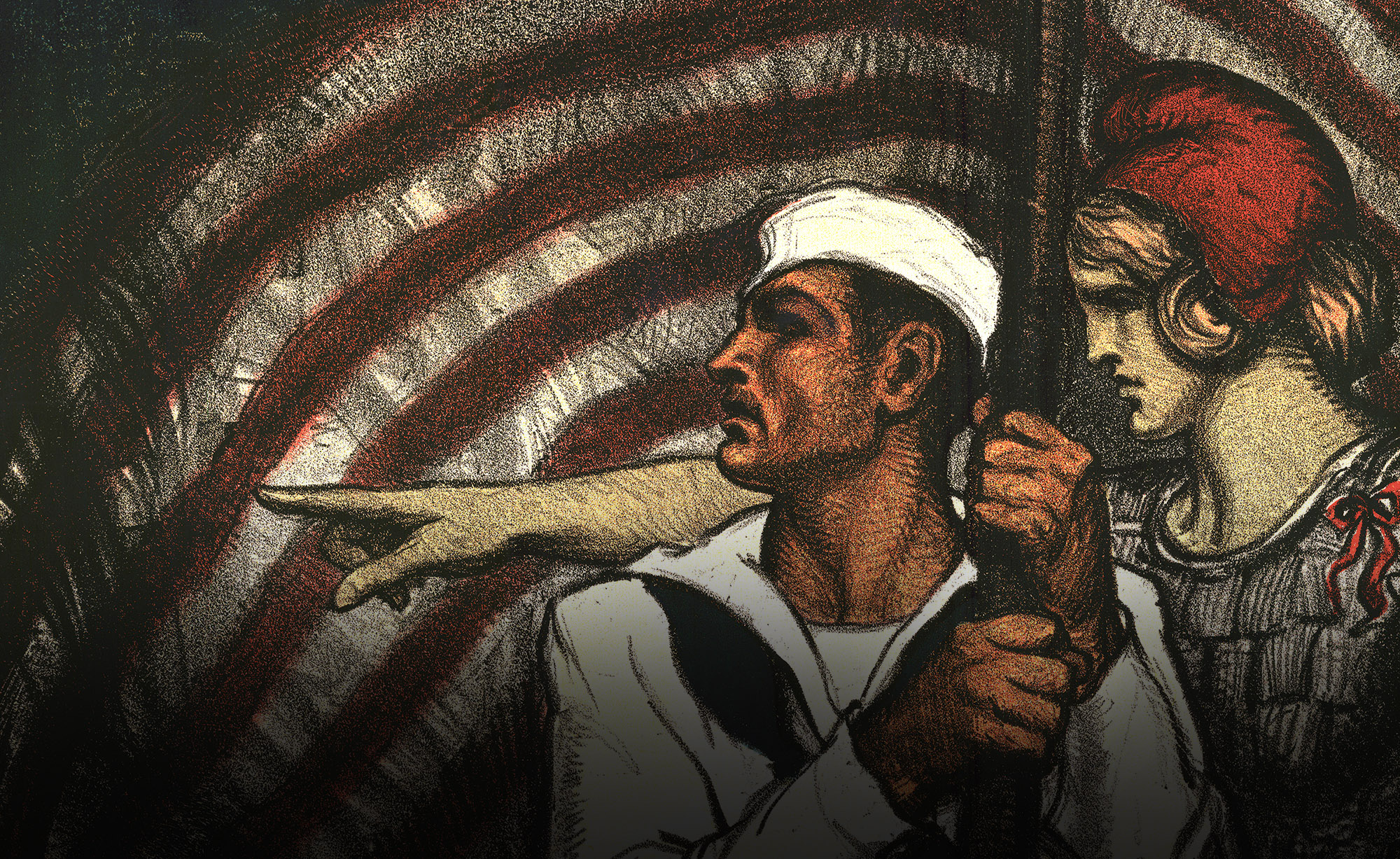| u0003_0004200_0000018 |
| Title | Feed A Fighter |
| Creator | Wallace Morgan |
| Date | 1918 |
| Format | 21 x 29 in |
| Description | Few propaganda artists had first-hand knowledge of the oftentimes grim and tragic realities of war. But Wallace Morgan, an American illustrator and Executive Board member of the Committee of Public Information, was commissioned as an official war artist and spent time in the trenches of France. This resulted in an intimate understanding of war that is uniquely communicated in this poster asking citizens to conserve food to help feed fighters abroad. Morgan’s sketch of a French soldier resting and eating in a trench captures a quiet moment of relative comfort in what was otherwise a hellish and deadly scene. The soldier holds what might be interpreted as a piece of bread in his left hand, and lifts a cup with his right; but instead of drinking, he pauses, staring with a piercing glance that situates the viewer within the trench. In contrast to images romantically portraying war as adventurous, heroic, and even pleasurable, Morgan’s stark contrast in lighting dramatizes the conflict while refusing to omit its gritty texture. The poster is rich in detail, and yet it is difficult to discern what is occurring, a consequence of Morgan’s decision to depict movement in the still image through penciling. Although the images is predominantly black and white, propagandists rarely missed an opportunity to include color, and in the text below the command “Waste nothing” calls out in red. Morgan’s poster is perhaps too artistic for mass appeal, but it demonstrates the incredible range of aesthetic styles contained in WWI posters. |
| Copyright and Terms | Images are in the public domain or protected under U.S. copyright law (Title 17, U.S. Code), and both types may be used for research and private study. For publication, commercial use, or reproduction, in print or digital format, of all images and/or the accompanying data, users are required to secure prior written permission from the copyright holder and from archives@ua.edu. When permission is granted, please credit the images as Courtesy of The University of Alabama Libraries Special Collections. |

